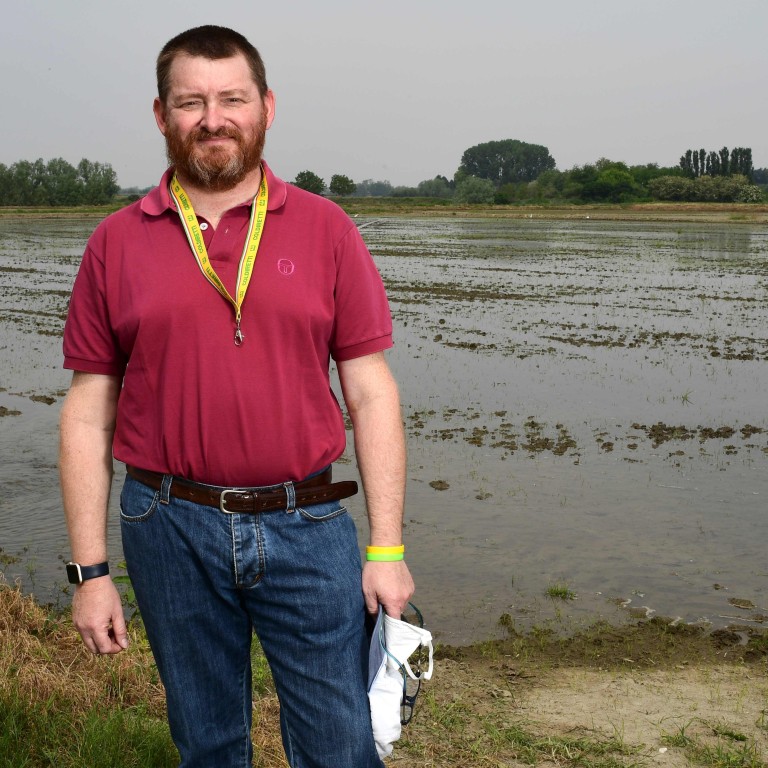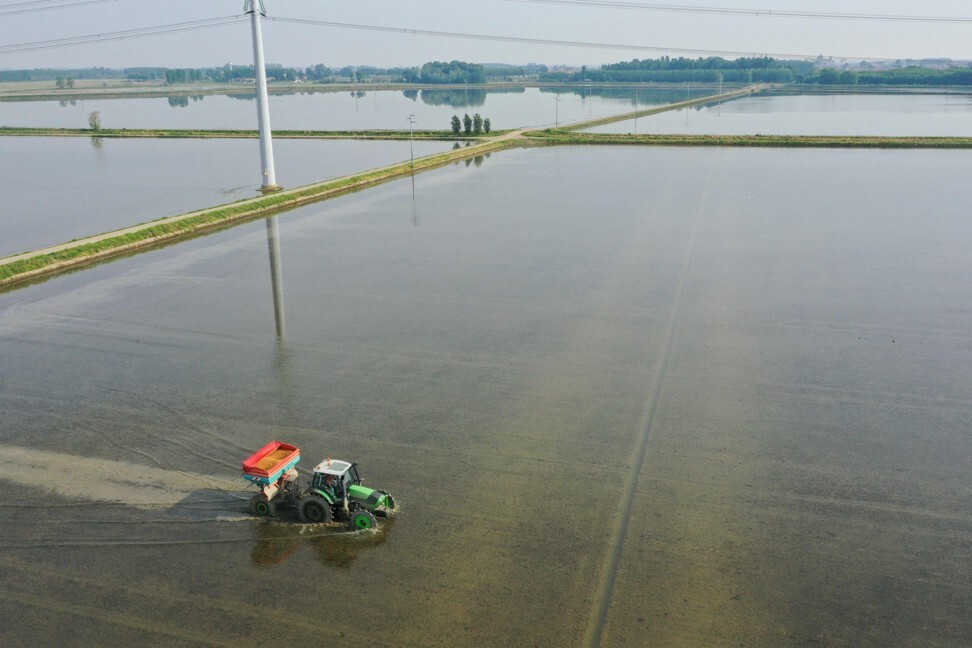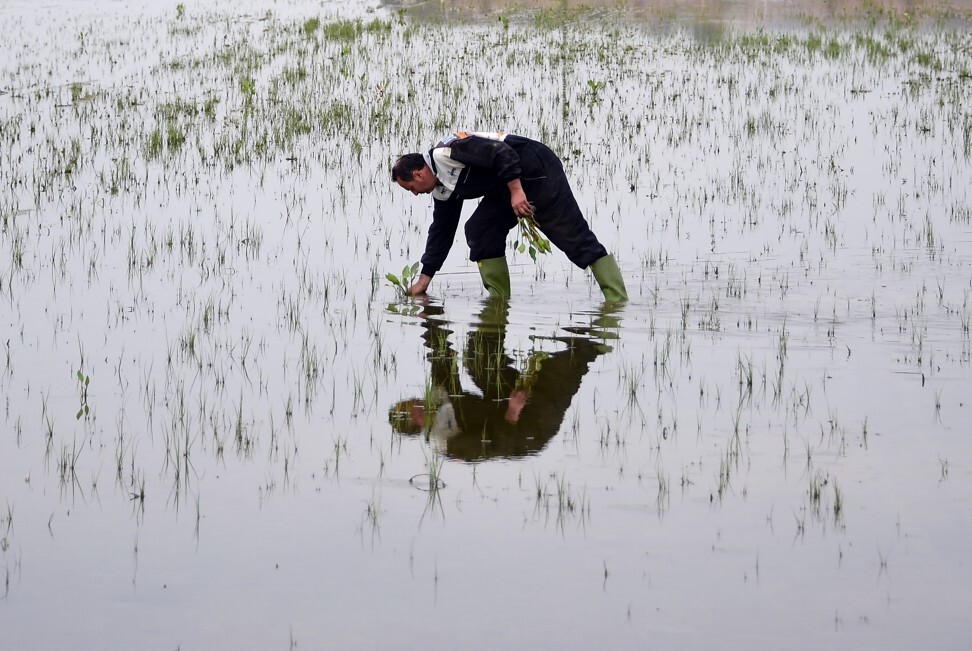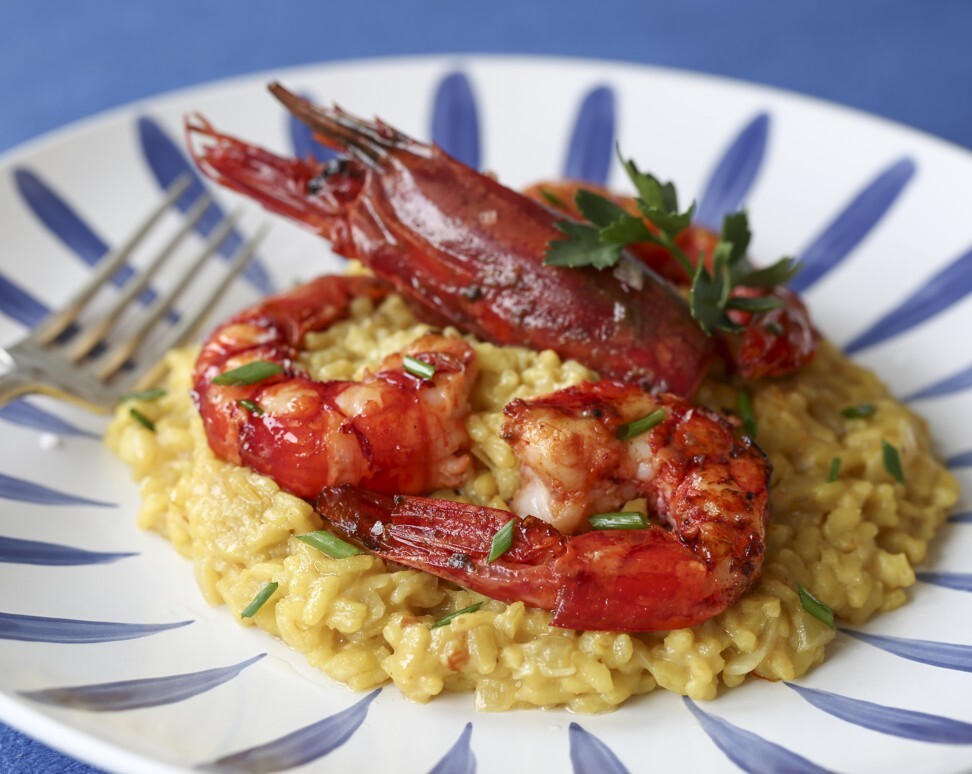
China eyes Italian risotto rice – Carnaroli, Arborio, Roma, Baldo – as Italians rediscover the staple during pandemic
- Consumption of Italian-grown rice has risen in Italy rise during the coronavirus pandemic, and China has signed a deal to import Italian rice
- ‘It’s a bit like selling ice cream to the Eskimos,’ Italian newspaper says of deal that is a boon for farmers in Pavia, Lombardy, Vercelli and Novara provinces
Europe’s top rice producer, Italy, has seen consumption of the staple rise throughout the coronavirus pandemic, putting even pasta in the shade.
It’s not just popular at home either – China has even signed a deal to import Italian rice.
“It is because our rice is better quality than that cultivated in China,” says Stefano Greppi, Pavia province president at Italy’s main agricultural union Coldiretti.

Greppi, himself the owner of a rice farm, welcomes the recent signing during the pandemic of an agreement allowing Italy, which produces more than half of European rice output, to export rice to China.
“It’s a bit like selling ice cream to the Eskimos,” quipped daily Il Corriere della Sera the day after the export protocol was signed in April.
“The doors of the huge Chinese market are opening to rice (and risotto) cultivated in the countryside around Pavia,” added the newspaper, explaining that “native imitations of Italian risotto” already exist in China.
Risotto … has always been a bit snubbed in Italian cuisine
Spread over 220,000 hectares (545,000 acres), Italian rice production totals an annual 1.5 million tonnes, cultivated by 4,200 producers. The country boasts more than 200 varieties, each with its own peculiarities.
Even so, Europe is a mere lightweight when it comes to global rice production. It produces just 0.4 per cent of the total world output of 500 million tonnes a year, 90 per cent of which is from Asia.
With the wind in its sails internationally, Italian rice is also making good headway at home. Consumption soared 47 per cent during the first six weeks of the coronavirus pandemic – sometimes outstripping demand even for pasta in that period, Coldiretti says.
“During the Covid-19 emergency, people rediscovered rice and also risotto, which has always been a bit snubbed in Italian cuisine,” says Stefania Buffa, a 27-year-old rice farmer from Robbio in Lombardy.

Sergio Lombardi, 63, who owns a farm in the same area, explains that “the region can count on water reserves and a constant supply throughout the duration of rice cultivation, which is not possible in many regions of Italy.”
Sown in spring, Italian rice is harvested between September and October.

Mechanisation then brought further crop advances.
Up until the 1950s and 1960s, people came from the south of Italy, particularly women, dubbed “mondine” or seasonal pruners, to cultivate the north’s Po plain.
Their harsh working conditions inspired the famous protest song “Bella ciao” as well as neo-realist films including Riso Amaro (“Bitter Rice”, 1949) notably featuring Silvana Mangano and Vittorio Gassman.

Your interest in risotto piqued? Here’s a recipe
SCMP senior food and wine editor Susan Jung suggests this recipe for shrimp and saffron risotto.
Seafood stock is cheap and easy to make: just save all the trimmings from whenever you cook fish or seafood and freeze. When you have enough (about 500g/17¾ oz), put everything in a pot, add half a peeled onion, a stalk of celery, a medium-size peeled carrot (cut into several chunks) and the tough green leaves from a thoroughly washed leek (use the tender part for another dish). Cover with about a litre of water, bring to the boil and simmer for an hour. Strain out the solids, pressing on them to extract the flavour, then refrigerate (for up to three days) or freeze.
If you don’t have seafood stock on hand, use dashi bags. These look like tea bags and are as convenient as bouillon cubes, but they taste better. Look for the type made of katsuobushi (dried bonito shavings) and kelp. For this recipe, soak two bags in 600ml (2½ cups) of boiling water.
Different types of Italian rice absorb different quantities of liquid; stop adding stock when the rice is at the correct texture and consistency for your tastes.
Ingredients
4 large fresh shrimp
About 600ml (2½ cups) of seafood stock (or dashi)
60g (2oz) unsalted butter, divided
A pinch of saffron threads
3-4 shallots, peeled
150g (5 1/3 oz) Italian rice, such as Carnaroli, Vialone Nano or Arborio
100ml (0.4 cups) dry white wine
Fine sea salt
A few chives and/or parsley leaves, for the garnish.
Directions
1. Remove the heads and shells from the shrimp.
2. Put the shells (but not the heads) in a saucepan and add the seafood stock (or dashi). Bring to the boil then lower the heat and simmer while preparing the other ingredients.
3. Put the saffron threads in a bowl and add a ladleful of the hot stock. Stir well and leave to steep.
4. Mince the shallots.
5. Heat 30g (1oz) of butter in a wide, medium-sized saucepan. When the butter is almost melted, add the shallots and a light sprinkling of salt and cook over a low flame until the shallots are soft. Add the rice and stir constantly for several minutes to lightly toast the grains.
6. Turn the flame to medium and add the white wine. Stir constantly until the white wine is almost fully absorbed – it should take only a couple of minutes. If it takes too long, increase the heat slightly.
7. Add the saffron threads and the soaking liquid and stir until it’s almost fully absorbed. Start adding the hot shrimp stock a ladleful at a time, stirring almost constantly. After about 12 minutes, taste a few rice grains to test how cooked they are. Continue to add the shrimp stock until the risotto is the consistency you like. If the grains are too firm after adding all the stock/dashi, stir in hot water and continue to cook.
8. When the risotto is at the right consistency, taste it and add salt, if necessary. Turn off the flame and cover the pot with the lid.
9. Heat a skillet over a medium flame and add 15g (½ oz) of butter. When the fat is sizzling, add the shrimp heads and bodies and cook until done – the bodies need only about 30 seconds on each side while the heads take a little longer.
10. Turn the flame back on under the risotto and remove the lid. Stir in 15g (½ oz) of butter and a final ladleful of stock, so the texture becomes slightly runny. As soon as the butter is melted, ladle the risotto into two shallow bowls. Add the shrimp bodies and heads, then garnish with parsley sprigs and/or snipped chives. Serve immediately.

.png?itok=arIb17P0)
